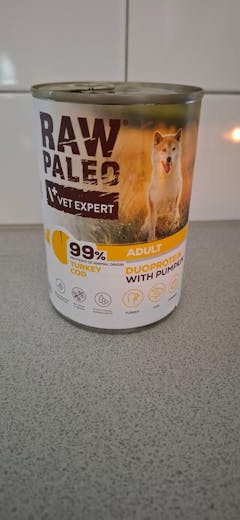Foder för Leversjukdom – Hund
Foder för Leversjukdom Hund: Stödja Leverfunktionen & Förbättra Livskvaliteten
Levern är ett av de mest komplexa och vitala organen i hundens kropp, ansvarig för avgiftning, metabolism av näringsämnen, proteinproduktion och mycket mer. När levern blir sjuk, kan hela hundens system påverkas. På Zoostar.se förstår vi allvaret i leversjukdomar och erbjuder ett noggrant utvalt sortiment av foder för leversjukdom hund. Dessa specialanpassade dieter är framtagna för att stödja leverns funktion, minska dess arbetsbörda och hjälpa din hund att bibehålla en god livskvalitet.
Vad Innebär Leversjukdom Hos Hundar?
Leversjukdom hos hundar kan ha många former, från inflammation (hepatit) till genetiska störningar (som kopparlagringssjukdom) eller tumörer. Oavsett orsak, när levern skadas, kan den inte utföra sina livsviktiga funktioner effektivt. Symptom kan vara vaga i början men utvecklas ofta till aptitlöshet, kräkningar, viktminskning, ökad törst, slöhet och i allvarliga fall gulsot eller neurologiska symptom (hepatisk encefalopati).
Diagnos ställs av veterinär genom blodprover, urinprov, ultraljud och ofta en leverbiopsi för en definitiv diagnos. En korrekt diagnos är avgörande för att kunna välja rätt foder för leversjukdom hund och behandlingsplan.
Hur Specialfoder Stödjer Levern
Foder för leversjukdom är vetenskapligt formulerade för att:
- **Minska Belastningen på Levern:** Genom kontrollerade nivåer av högkvalitativt, lättsmält protein. Detta minimerar produktionen av ammoniak, som en skadad lever har svårt att avgifta och som kan leda till neurologiska problem.
- **Minska Kopparansamling:** Med låga kopparnivåer för att förhindra ytterligare leverskada, särskilt viktigt för raser predisponerade för kopparlagringssjukdom.
- **Tillhandahålla Tillräcklig Energi:** Högt innehåll av lättsmälta kolhydrater och fett säkerställer att hunden får tillräckligt med energi utan att överbelasta levern med proteinmetabolism.
- **Stödja Levercellerna:** Berikade med antioxidanter (Vitamin E, C, SAMe, mjölktistel) för att skydda levercellerna från oxidativ stress och främja regeneration.
- **Kontrollera Vätskeansamling:** Måttligt reducerad natriumhalt för att minska risken för vätskeansamling (ascites).
- **Optimera Näringsupptaget:** Tillsatta B-vitaminer och zink för att kompensera för eventuella brister och stödja leverns ämnesomsättning.
Dessa dieter är en del av kategorin veterinärfoder och är avgörande för att hantera leversjukdom effektivt.
Viktiga Kompletterande Åtgärder
Utöver dieten är flera andra åtgärder nödvändiga i hanteringen av leversjukdom:
- **Medicinsk Behandling:** Veterinären kan ordinera läkemedel som antibiotika, kortikosteroider (vid inflammation), ursodeoxycholsyra (för gallflödet), laktulos (mot ammoniak) eller kopparbindande medel.
- **Kosttillskott:** I samråd med veterinär, kan stödjande tillskott som SAMe, mjölktistel, och extra vitaminer/mineraler vara fördelaktiga.
- **Vätske- och Elektrolytbalans:** Säkerställ god hydrering, särskilt vid kräkningar eller diarré.
- **Hantering av Komplikationer:** Behandla symptom som vätskeansamling (ascites) med diuretika eller genom att tappa vätska. Hantera neurologiska symptom med laktulos och proteinkontrollerad diet.
- **Regelbundna Veterinärbesök:** Täta uppföljningar med blodprover och eventuellt ultraljud är avgörande för att övervaka leverns funktion och justera behandlingen.
- **Total Hälsobedömning:** Leversjukdom kan påverka och vara relaterad till andra hälsoproblem. Det är viktigt att beakta hundens totala hälsa, inklusive hudhälsa, mage- och tarmhälsa, diabeteskontroll, njursjukdom, urinvägsproblem, led- och rörelsehälsa, stress och nervositet, tandhälsa och hjärtsjukdom, då alla dessa kan påverka varandra. Även viktkontroll för hundar är av stor vikt.
Med rätt foder för leversjukdom hund från Zoostar.se och ett tätt samarbete med din veterinär, kan du ge din hund den bästa möjliga vården och stödja dess leverfunktion.
Vanliga frågor om Foder för Leversjukdom Hund
Här besvarar vi några av de mest frekventa frågorna vi får angående foder för hundar med leversjukdom.
Vad är leversjukdom hos hundar och vilka är de vanligaste orsakerna?
Levern är ett av de mest vitala organen i hundens kropp, ansvarig för över 1500 olika funktioner. Den spelar en central roll i metabolism, avgiftning, proteinproduktion, gallproduktion och lagring av vitaminer och mineraler. När levern blir sjuk, kan hela kroppens funktion påverkas allvarligt. Leversjukdom hos hundar kan variera i svårighetsgrad och typ, från akuta till kroniska tillstånd. Vanliga typer av leversjukdomar: - Hepatit (inflammation i levern): Kan vara akut eller kronisk, infektiös eller icke-infektiös. - Levercirros: Slutstadiet av kronisk leversjukdom, där levervävnaden är irreversibelt skadad och ersatt av ärrvävnad. - Portosystemisk shunt (PSS): En medfödd eller förvärvad kärlmissbildning där blodet shuntas förbi levern istället för att passera igenom den för avgiftning. - Levertumörer: Kan vara godartade eller elakartade. - Kopparförgiftning/Kopparlagringssjukdom: Vissa hundraser (t.ex. Bedlington terrier, West Highland White terrier, Dobermann) har en genetisk benägenhet att lagra för mycket koppar i levern, vilket leder till progressiv leverskada. - Akut leverskada: Kan orsakas av toxiner (t.ex. vissa svampar, läkemedel), infektioner eller trauma. - Kolangiohepatit: Inflammation i gallgångarna och levern. Orsaker till leversjukdom hos hundar: Orsakerna är många och ibland komplexa, men de vanligaste inkluderar: - Infektioner: Bakteriella (t.ex. leptospiros), virala, parasitära (t.ex. leverflundror) eller svampinfektioner. - Toxiner: Intag av giftiga ämnen som vissa växter, läkemedel (t.ex. överdos av paracetamol), kemikalier, möglig mat eller alger. - Genetiska faktorer: Vissa raser är predisponerade för specifika leversjukdomar (t.ex. kopparlagringssjukdom hos Bedlington terrier). - Läkemedel: Långvarig användning av vissa läkemedel (t.ex. kortikosteroider, vissa kramplösande medel) kan belasta levern. - Andra underliggande sjukdomar: Sjukdomar som pankreatit, diabetes, eller hjärtsjukdomar kan påverka levern indirekt. - Trauma: Skador mot buken kan orsaka leverskada. Symptom på leversjukdom hos hundar: Symptomen kan vara vaga och ospecifika i de tidiga stadierna, eftersom levern har en stor reservkapacitet. När symptomen väl uppträder, kan de inkludera: - Aptitlöshet och viktminskning. - Kräkningar och diarré. - Ökad törst och urinering. - Slöhet och minskad energi. - Gulsot (ikterus): Gulaktig missfärgning av hud, ögonvitor och slemhinnor, orsakad av ansamling av bilirubin. - Ökad bukomfång (ascites): Vätskeansamling i buken. - Neurologiska symptom (hepatisk encefalopati): Desorientering, dregling, kramper, beteendeförändringar (t.ex. trycker huvudet mot väggen), som ett resultat av att gifter (särskilt ammoniak) ansamlas i blodet och påverkar hjärnan. - Mörk urin och ljus avföring. - Blödningstendens: Levern producerar koagulationsfaktorer. Diagnos av leversjukdom hos hundar: Diagnosen ställs av en veterinär genom en kombination av: - Blodprover: Förhöjda leverenzymer (ALAT, ALP), förhöjt bilirubin, lågt albumin, förändrade koagulationsvärden, förhöjda gallsyror. - Urinprov: Kan visa förändringar. - Ultraljud: För att visualisera leverns storlek, struktur och eventuella förändringar eller tumörer. - Röntgebild: Kan ge information om leverns storlek och form. - Leverbiopsi: Ofta nödvändig för en definitiv diagnos och för att fastställa typen av leversjukdom och graden av skada. Detta är guldstandarden. - Andra tester: T.ex. kopparbiopsi vid misstänkt kopparlagringssjukdom. Ett foder för leversjukdom hund är en grundläggande del av behandlingen för att stödja leverfunktionen och minska dess arbetsbörda, men det måste alltid kompletteras med en veterinärdiagnos och eventuell medicinsk behandling.
Vilka näringsämnen är avgörande i foder för leversjukdom hund, och varför?
Ett anpassat foder för leversjukdom hund är en hörnsten i behandlingen och syftar till att minska belastningen på den skadade levern samtidigt som den tillför tillräckligt med näring för att understödja regeneration och förhindra näringsbrister. Fodrets sammansättning måste noga balanseras för att uppnå dessa mål. Här är de viktigaste näringsämnena och varför de är avgörande: 1. Kontrollerad, Högkvalitativt Protein: - Varför: Protein är nödvändigt för cellreparation och underhåll av muskelmassa. Men en skadad lever kan ha svårt att metabolisera biprodukter från protein (särskilt ammoniak), vilket kan leda till hepatisk encefalopati (neurologiska symptom). - Lösning: Foder för leversjukdom innehåller noga utvalda, lättsmälta proteinkällor (t.ex. vegetabiliska proteiner som soja, mejeriproteiner som kasein, eller specifika animaliska proteiner) i en kontrollerad mängd. Målet är att tillföra tillräckligt med protein för att undvika muskelförtvining utan att överbelasta levern. Vissa foder kan ha ett högre proteininnehåll om leverfunktionen fortfarande är god, medan de med hepatisk encefalopati kräver strängare proteinrestriktion. 2. Låg Kopparhalt: - Varför: Koppar lagras normalt i levern och utsöndras via gallan. Vid leversjukdom, särskilt kronisk hepatit eller genetiska lagringssjukdomar, kan koppar ansamlas till toxiska nivåer och orsaka ytterligare leverskador. - Lösning: Dessa foder har en avsevärt reducerad kopparhalt för att förhindra överdriven ansamling och underlätta utsöndring. 3. Kontrollerad Natriumhalt: - Varför: För mycket natrium kan bidra till vätskeansamling (ascites, ödem) i buken eller i andra delar av kroppen, vilket är vanligt vid leversjukdom. - Lösning: Natriumhalten är måttligt reducerad för att minimera vätskeretention. 4. Hög Energi från Kolhydrater och Fett: - Varför: Eftersom proteinintaget kan vara begränsat, måste energibehovet täckas av andra källor för att förhindra att kroppen bryter ner protein för energi (vilket skapar mer ammoniak). - Lösning: Dessa foder är ofta energitäta, med en ökad andel lättsmälta kolhydrater och fett. Fett är en koncentrerad energikälla och genererar färre toxiska biprodukter än protein. Lättsmälta fetter (t.ex. MCT-oljor) kan vara fördelaktiga. 5. Tillsatta Vitaminer och Mineraler: - Varför: En sjuk lever kan ha svårt att lagra och metabolisera vitaminer (särskilt fettlösliga A, D, E, K) och B-vitaminer. Dessutom kan ökad urinering och minskad gallproduktion leda till brister. - Lösning: Berikning med vattenlösliga B-vitaminer, vitamin E och K, samt zink (som kan hämma kopparupptaget och är en antioxidant). Järn och mangan kan vara kontrollerade. 6. Antioxidanter: - Varför: En skadad lever upplever ofta ökad oxidativ stress. - Lösning: Tillsatta antioxidanter som vitamin E, C, selen, taurin och S-adenosylmetionin (SAMe) hjälper till att skydda levercellerna och stödja deras funktion. 7. Högt Fiberinnehåll (lösliga fibrer): - Varför: Lösliga fibrer (t.ex. från psyllium) kan binda ammoniak och andra gifter i tarmen, vilket förhindrar absorption och minskar leverns arbetsbörda. De kan också hjälpa till att reglera tarmtransit. Ett foder för leversjukdom hund är en specialiserad diet och är en del av veterinärfoder. Det är avgörande att det ordineras och följs upp av en veterinär, då felaktig kost kan förvärra tillståndet. På Zoostar.se hittar du dessa anpassade foder som kan ge din hund de bästa förutsättningarna att hantera sin leversjukdom.
Hur hanterar man leversjukdom hos hundar utöver dieten?
Att hantera leversjukdom hos hundar är komplext och kräver ett mångfacetterat tillvägagångssätt där dieten med foder för leversjukdom hund är en central del, men långt ifrån den enda. En nära dialog och samarbete med din veterinär är avgörande för att optimera hundens livskvalitet och bromsa sjukdomsförloppet. Här är andra viktiga åtgärder: 1. Medicinsk Behandling: - Antibiotika: Om det finns tecken på bakteriella infektioner i levern eller gallgångarna. - Kortikosteroider (kortison): Vid inflammatoriska leversjukdomar (hepatit) för att dämpa inflammation. Används med försiktighet. - Ursodeoxycholsyra (UDCA): Ett gallsalt som hjälper till att förbättra gallflödet och skydda levercellerna. - Laktulos: Vid hepatisk encefalopati för att minska absorptionen av ammoniak från tarmen. Det fungerar som ett laxermedel och sänker pH i tarmen. - Kopparbindande medel: Vid kopparlagringssjukdom för att utsöndra överskott av koppar (t.ex. D-penicillamin, Trientin). 2. Stödjande Kosttillskott (alltid i samråd med veterinär): - S-Adenosylmetionin (SAMe): En viktig antioxidant och föregångare till glutation, som är avgörande för leverns avgiftningsprocesser. Kan förbättra leverfunktionen och skydda levercellerna. - Mjölktistel (Silymarin): En antioxidant och antiinflammatorisk substans som kan stödja leverns hälsa. - Vitamin E & C: Ytterligare antioxidanter. - B-vitaminer: För att kompensera för minskad lagring i levern. - Zink: Kan hjälpa till att minska kopparabsorptionen och är viktigt för leverns funktion. 3. Vätske- och Elektrolytbalans: - Vid kräkningar/diarré: Säkerställa tillräckligt vätskeintag och korrigera eventuella elektrolytrubbingar, vilket kan kräva intravenös vätska. 4. Hantering av Ascites (Vätska i buken): - Diuretika (vätskedrivande medel): För att minska vätskeansamlingen i buken. - Paracentes: I svåra fall kan veterinären behöva tappa ut vätskan från buken med en nål. - Natriumrestriktion i kosten: En viktig del av dieten för att minska vätskeansamling. 5. Kontroll av Blödningstendens: - Vitamin K: Om levern inte producerar tillräckligt med koagulationsfaktorer. 6. Hantering av Hepatisk Encefalopati: - Proteinkontrollerad diet: Som nämnts, är en diet med kontrollerad proteinnivå av hög kvalitet avgörande. - Laktulos: För att minska ammoniak i tarmen. - Antibiotika: Vissa antibiotika kan användas för att minska ammoniakproducerande bakterier i tarmen. 7. Regelbunden Uppföljning och Övervakning: - Blodprover: Täta uppföljningar med blodprover (leverenzymer, gallsyror, koagulationsvärden) för att bedöma leverns funktion och justera behandlingen. - Ultraljud: För att följa leverns tillstånd. - Viktkontroll: Bibehåll en hälsosam vikt. Även andra relaterade hälsoproblem kan påverkas. Till exempel kan hundar med leversjukdomar behöva extra uppmärksamhet på hudhälsa och mage/tarmhälsa. Ibland kan de också ha kopplingar till diabetes, njursjukdom, urinvägsproblem, led- och rörelsehälsa, stress och nervositet, tandhälsa eller hjärtsjukdom. Livskvalitet: Målet är alltid att maximera hundens livskvalitet. Detta kan innebära att balansera behandlingens intensitet med hundens välbefinnande. Att ha en hund med leversjukdom kräver tålamod och engagemang. Genom att följa veterinärens råd, ge det rekommenderade foder för leversjukdom hund från Zoostar.se och vara uppmärksam på hundens symptom, kan du ge din bästa vän bästa möjliga vård.
Foder för Leversjukdom hos Hund – Vanliga Frågor & Svar
Varför kräver hundar med leversjukdom ett specialanpassat foder och vad händer om man ger vanlig hundmat?
Levern är kroppens största metabolismorgan och ansvarar för näringsomsättning, avgiftning, hormonreglering och produktion av viktiga proteiner. Vid leversjukdom minskar leverns kapacitet – vilket innebär att vanliga fodermängder, proteiner och fetter kan skapa överbelastning, ansamling av toxiner och försämrad energibalans.
Specialfoder för leversjukdom är utformat för att:
✔ minska ammoniakbildning
✔ avlasta leverns avgiftningsprocess
✔ stabilisera blodsocker & energitillförsel
✔ minska oxidativ stress med antioxidanter
✔ förse kroppen med lättsmälta proteiner av hög kvalitet
Vanligt foder kan i många fall förvärra symtom och fördröja läkning, eftersom höga proteinnivåer och fel fettsyraprofil belastar levern ytterligare.
Vilka symtom tyder på att hunden kan behöva leverspecifikt foder?
De vanligaste kliniska tecknen är:
• kräkningar eller illamående
• minskad aptit eller avmagring
• gulslemhinna (gulfärgning av ögon/mun)
• buksvullnad (ascites)
• trötthet, nedsatt ork eller förvirring
• ljus avföring / mörk urin
Leversjukdom kan vara både akut och kronisk, och korrekt foder är en del av behandlingsplanen, inte en fristående lösning. Ju tidigare kosten anpassas, desto bättre prognos för återhämtning och organfunktion.
Varför innehåller leverfoder ofta mindre protein? Är det inte risk för muskelförlust?
Vid leverinsufficiens har kroppen svårt att metabolisera proteiner. Överskott leder till ammoniakbildning som cirkulerar i blodet och kan orsaka leverencefalopati – ett tillstånd som kan ge neurologiska symptom såsom desorientering och kramper.
Därför är proteinnivån kontrollerad men aldrig eliminerad. Kvaliteten är nyckeln. Leverfoder använder högvärdiga, lättsmälta proteinkällor som ger maximal nytta per gram, utan att belasta avgiftningssystemet.
Målet är balans:
➡ tillräckligt med protein för muskelmassa
➡ men så förfinat att levern klarar nedbrytningen
Hur fungerar antioxidanter och L-karnitin i leverfoder?
Leverceller utsätts för oxidativ stress vid inflammation, toxinpåslag och sjukdom. Antioxidanter som vitamin E, C, zink, selen och karotenoider skyddar cellmembranen, bromsar vävnadsskada och främjar regenerering.
L-karnitin förbättrar fettmetabolism och energiutnyttjande i cellerna. För många hundar med leversjukdom är detta avgörande för att undvika fettinlagring i levervävnaden (hepatic lipidosis), särskilt om aptiten är låg.
Just kombinationen fettsyrestöd + antioxidantförsvar är det som gör leverspecifikt foder så effektivt i kliniska fall jämfört med vanliga kostlösningar.
Hur länge behöver hunden äta leverfoder och kan den gå tillbaka till vanlig diet?
Vid kroniska leversjukdomar är specialfoder oftast livslångt. Levern kan reparera sig själv, men gör det långsamt och kräver stabil kost och låg belastning över tid. Efter förbättring kan man i vissa fall återintroducera normalt foder, men det ska göras stegvis, under veterinärkontroll och med blodprovuppföljning (ALAT, ASAT, ALP, albumin, gallsyror).
Vid akuta problem kan leverfoder användas tillfälligt under 8–16 veckor tills värden stabiliseras. Om symtomen återkommer efter återgång behöver specialfodret fortsätta.
Kontinuitet är den största prognosfaktorn.
Husdjursprodukter Online
Utforska fler populära hundkategorier
Här hittar du många av våra mest efterfrågade kategorier – från hundfoder och godis till tillbehör, vård och aktivering.
Ledande Fodertillverkare
Populära hundfodermärken
Här hittar du våra mest populära hundfoder – från spannmålsfritt till veterinärfoder. Klicka på ett varumärke för att se hela sortimentet.






